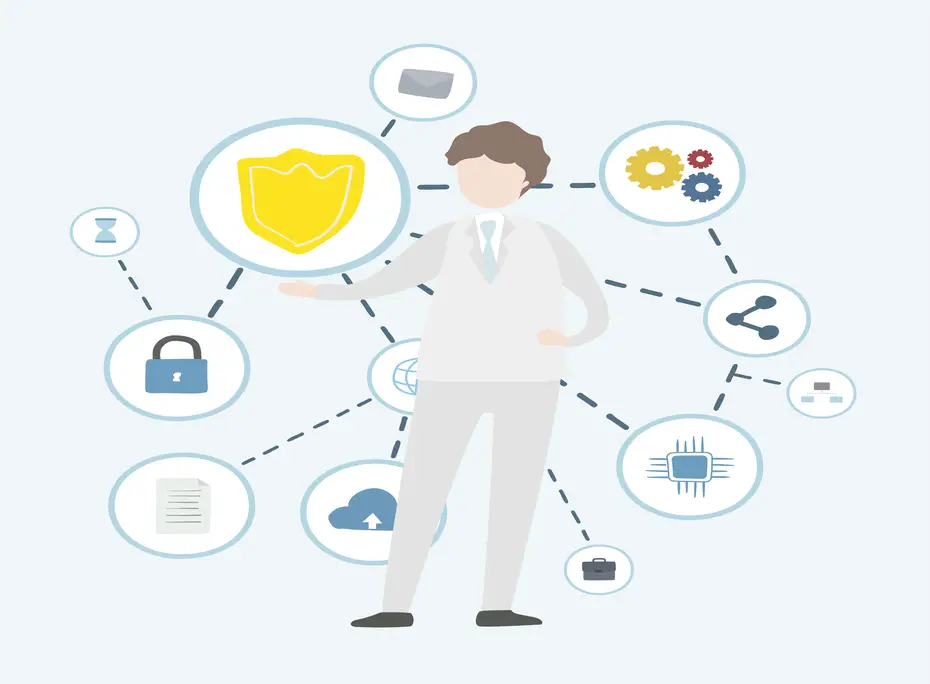In the ever-evolving landscape of the digital world, individuals face a growing threat known as social engineering. This sophisticated form of manipulation preys on human psychology to gain unauthorized access to sensitive information. Let’s explore various strategies of how can you protect yourself from social engineering.
Awareness is Key:
The first line of defense against social engineering is awareness. Understanding the tactics employed by malicious actors is crucial for recognizing and thwarting their attempts. Common techniques include phishing emails, pretexting, and baiting. By staying informed about the latest social engineering methods, you can develop a keen eye for potential threats.
Verify Before Trusting:
One of the cardinal rules in cybersecurity is to verify before trusting. Whether it’s an email, a phone call, or a message from an unknown source, always verify the authenticity of the communication. Contact the purported sender through a trusted channel, such as a known phone number or email address, to confirm the legitimacy of the request before taking any action.
Strengthen Passwords and Use Two-Factor Authentication:
Passwords are often the first line of defense against unauthorized access. Ensure that your passwords are strong, unique, and regularly updated. Implementing two-factor authentication adds an extra layer of security by requiring an additional verification step beyond just a password, making it significantly more difficult for attackers to gain access to your accounts.
Be Skeptical of Unsolicited Communications:
Social engineers often exploit the trust people place in familiar communication channels. Be skeptical of unsolicited emails, messages, or phone calls, especially if they request sensitive information or immediate action. Legitimate organizations typically don’t ask for sensitive information via email, so exercise caution before complying with such requests.
Educate Yourself and Others:
Knowledge is power. Educate yourself about how can you protect yourself from social engineering, share this knowledge with friends, family, and colleagues. A collective understanding of the risks can create a more resilient network of individuals who are less susceptible to manipulation.
Monitor Your Online Presence:
Be mindful of the information you share online, as social engineers often leverage publicly available data for their attacks. Regularly review your privacy settings on social media platforms and limit the amount of personal information accessible to the public. The less information available, the harder it is for attackers to craft convincing social engineering schemes.
Keep Software and Systems Updated:
Maintaining up-to-date software and security patches is crucial for preventing exploitation of vulnerabilities. Regularly update your operating system, antivirus software, and other applications to ensure that you have the latest security features and defenses against emerging threats.
Practice Email Hygiene:
Email is a common vector for social engineering attacks, particularly through phishing attempts. Practice good email hygiene by avoiding clicking on suspicious links or downloading attachments from unknown sources. Hover over links to preview the destination URL before clicking, and be cautious of unexpected attachments, even if they seem to come from familiar contacts.
Create Multiple Email Addresses:
Consider using separate email addresses for different purposes. For example, use one email for personal communications, another for online shopping, and a separate one for professional or financial transactions. This way, if one account is compromised, the others remain secure, minimizing the potential damage from a successful social engineering attack.
Implement Security Software:
Utilize reputable security software, including antivirus and anti-malware tools, to provide an additional layer of protection. These tools can detect and prevent malicious activities, such as phishing attempts and malware infections, enhancing your overall cybersecurity posture.
Conduct Security Audits:
Regularly review and audit your online accounts and settings. This includes social media profiles, financial accounts, and any other platforms where you store personal information. Check for unusual activities, review connected devices, and ensure that security settings are appropriately configured to maximize protection against social engineering threats.
Be Wary of Impersonation:
Social engineers often employ impersonation tactics, pretending to be someone you know or trust. Be cautious if someone requests sensitive information or payment unexpectedly, even if the communication appears to be from a friend, family member, or colleague. Verify their identity through a separate, trusted channel before taking any action.
Secure Your Wi-Fi Network:
A compromised Wi-Fi network can be an entry point for social engineers. Protect your home network by using a strong, unique password for your Wi-Fi router, enabling WPA3 encryption, and changing default login credentials. Regularly update your router’s firmware to patch potential vulnerabilities.
Report Suspicious Activity:
If you encounter a potential social engineering attempt, report it to the relevant authorities or the organization being impersonated. Many companies and online platforms have mechanisms for reporting phishing or suspicious activities. By reporting incidents promptly, you contribute to the collective effort to combat social engineering on a broader scale.
Conclusion:
In the rapidly evolving landscape of cyber threats, staying ahead of social engineering requires a holistic approach. By incorporating these additional measures into your cybersecurity strategy, how can you protect yourself from social engineering. You can create a more comprehensive defense against the tactics employed by malicious actors. Remember that cybersecurity is an ongoing process, and maintaining a proactive mindset is essential for safeguarding your digital presence.

